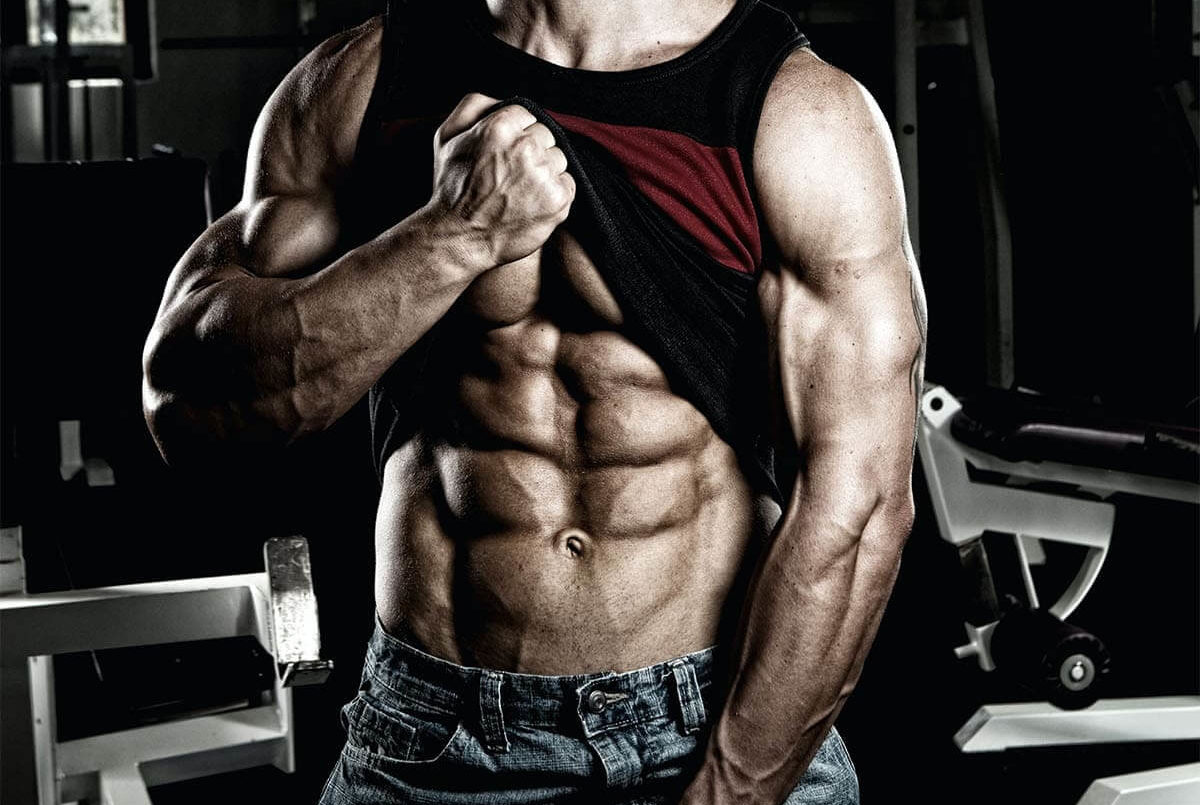For many bodybuilders and gym-goers, getting a pump is one of the most enjoyable sensations of working out. There are many rewarding aspects to lifting weights, you look better, you feel better, you become stronger, and more. But a pump is often one of the reasons you keep coming back to the gym, even after you’ve made a decades worth of gains and are not getting stronger every workout.
A pump is caused by an increase in blood flow to the muscle combined with a decrease in blood exiting the muscle. This excess in blood is absorbed by the muscle cells and causes them to expand.
When you have a pump, you look bigger, your veins are more visible, and you can feel your skin being stretched tight around your muscles. This feeling is often equated to the feeling of sex, due to Arnold Schwarzenegger’s infatuation with the sensation.
To get a better pump and experience the ultimate feeling of fullness that having your muscles pumped with blood provides, there are several different ways that this can be achieved.
1. Fully Contract the Muscle Every Rep
The single, most important thing to focus on for getting a better pump is your mind to muscle connection. Without enough time under tension and resistance put on the muscle, the body will not increase the amount of blood being sent to the muscle being trained.
The most common reason for not getting a pump during a training session is that you are not hitting the muscle properly. This may be because you are using a different muscle to move the weight, you’re swinging in order to lessen the resistance, the weight is too heavy, or you are not completing a full contraction of the muscle being targeted.
In order to maximize the blood sent to a muscle, every rep during a training session should be controlled and the muscle should be fully squeezed.
This study on blood flow during leg extensions found that muscle contraction frequency and time under tension had an appreciable effect on mean blood flow. This means that the more contractions a muscle completes under tension, the better the pump will be.
2. Take an Agmatine Sulfate Supplement
Adding to fuller muscle contractions, another way to get better pumps during weightlifting is by increasing nitric oxide. Nitric oxide is a gaseous molecule that relaxes blood vessels. When nitric oxide is increased, circulation improves and blood is able to travel more easily.
There are many ways to increase nitric oxide. One easy method is to supplement with agmatine sulfate, a metabolite of L-arginine.
Agmatine sulfate affects nitric oxide by binding to the enzymes nNOS and iNOS. These enzymes regulate the production of nitric oxide. When agmatine sulfate binds to nNOS and iNOS, they are inhibited and eNOS is boosted. These actions work to enhance NOS (nitric oxide synthase), leading to an overall increase in blood flow.
To gain the benefits of agmatine sulfate, you can consume more fermented foods or take an agmatine sulfate supplement. Since the agmatine sulfate in fermented food is only present in a minimal amount, it is better to supplement.
3. Consume Carbohydrates Before Weightlifting
A third way to get better pumps during a workout is to eat food containing carbohydrates before training.
Pre-workout carbs increase available glycogen which is the primary source of energy for lifting. Increased glycogen in the muscle will help add volume to the muscle and allow it to perform optimally.
Eating carbohydrates before your workout will also decrease the release of cortisol during the training session. This will keep anabolic hormones elevated, prevent the body from becoming catabolic, and maintain optimal levels of nitric oxide.
A study done on the effects of cortisol found that by increasing the levels of cortisol in the body, vasodilation (widening of blood vessels) was inhibited. Since wide blood vessels are needed for a pump, it is worthwhile to reduce cortisol by consuming carbohydrates in order to avoid diminished blood flow.
4. Consume Enough Sodium and Electrolytes
Along with carbohydrates, you need to consume enough sodium and other electrolytes as well.
Sodium is crucial for water retention and hydration. The body needs sodium in order to fill cells with water, so adding salt and other electrolytes like calcium, potassium, magnesium, and phosphorous to your pre-workout meal or shake will increase the size of the muscles during training and result in better pumps.
5. Take a Creatine Supplement
Another supplement that can help to attain pumps is creatine.
Creatine is an amino acid that allows muscle cells to hold more water. Dehydration is detrimental to getting a pump. By taking a creatine supplement you ensure that the cells in your muscles are fully hydrated, adding volume to the muscle, boosting blood flow, and optimizing the pump from weightlifting.
Creatine can also increase ATP synthesis which improves training performance and will have an indirect positive effect on getting a pump.
6. Drink Water
While electrolytes and creatine will help more water get to the muscle cells, it is still necessary to drink water and consistently hydrate throughout every training session.
Drinking water will increase the overall blood volume and fluid in your body which means more blood flow can be directed to the muscles that are being trained. Since more blood flow to your muscles will result in better pumps and improved recovery, drink water often and make sure you hydrate before all workouts.
7. Breathe Through Your Nose, Not Your Mouth
One more way that you can get better pumps when weightlifting is by breathing through your nose, or nasal breathing.
Nasal breathing increases nitric oxide levels in the blood by more than 20%. This is because the nasal airways excrete nitric oxide and help maintain the right oxygen to nitrogen balance in the body.
A study done on breathing through the mouth, breathing through the nose, and breathing through the trachea came to the conclusion that breathing through the nose results in 6 times more nitric oxide than breathing through the mouth.
This increase in nitric oxide will dilate the blood vessels and help more blood reach the muscle, supplying amino acids for repair and creating a larger pump.
8. Stretch and Warm-Up Before Weightlifting
The next method for getting better pumps is stretching and warming up before training.
While the question of wether or not static stretching before lifting is beneficial for pumps is debated over, the overall benefits of static stretching for blood flow and recovery are well backed by research.
A study done on daily muscle stretching found that stretching daily for 4 weeks increases vasodilation, angiogenesis, and blood flow to muscles during resistance training. This study on warming up before exercise concluded that warm-ups increase overall performance and blood flow.
For getting better pumps, it is best to warmup with mobility work and light exercises directly before workouts, and do static stretching in the mornings and post-workout.
9. Get Enough Sleep
Another often overlooked factor of gaining a pump is the amount of sleep you get per night. Sleep is important for hormonal function and recovery, but is also crucial for achieving pumps during weightlifting.
If your body is not well rested and fully recovered, obtaining a pump is going to be much more difficult. For most people, 6-9 hours is the optimal range for performance, recovery, and fuller pumps during training sessions.
10. Intra-Workout Nutrition
Lastly, eating during your workout can help maintain energy, decrease muscle protein breakdown, lower cortisol, and get better pumps.
The best intra-workout nutrition is a combination of 10-30g of easily-digestible carbohydrates, electrolytes, and EAA’s (essential amino acids). Consuming these nutrients will decrease fatigue, keep you in an anabolic state, keep you hydrated, and maintain ideal overall blood volume and blood flow to the muscles.
Summary
Concluding, 10 ways to get better pumps when weightlifting are fully contract the muscle, take an agmatine sulfate supplement, consume carbohydrates pre-workout, consume enough sodium and electrolytes, take a creatine supplement, drink water, breathe through your nose, stretch, warmup before weightlifting, sleep 6-9 hours per night, and consume easily-digestible carbohydrates, electrolytes, and EAA’s during your workouts.
For more on weightlifting and building muscle, such as how to write yourself a training program and feeder workout training, click here.







